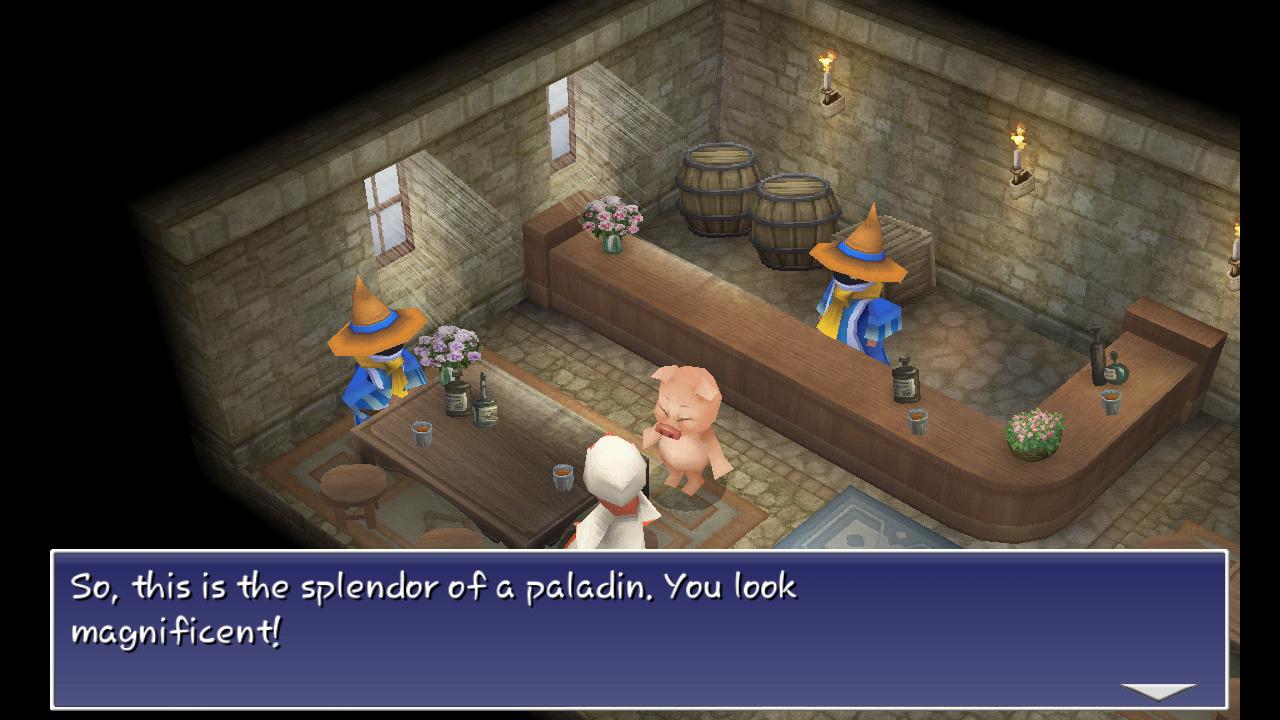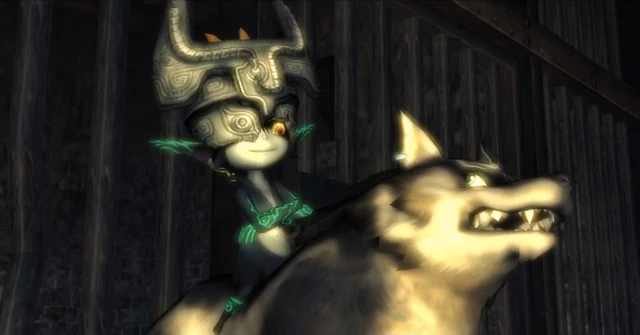And the mechanical importance they hold.
The action adventure genre incorporates a wide variety of games, styles and influences, from two dimensional endeavours across fantasy landscapes to modern escapades against unending hordes of enemies. While transformation is often an uncommon theme in these games, when they do appear they generally hold mechanical significance. This can be anywhere to hindering or helping the hero on their overall journey to being a simple answer to a puzzling set of events. While some games have help from fan mods to create new and interesting features, this article will focus on how transformation can change a game at its core.
5. Castlevania: Symphony of the Night
Symphony of the Night marked a definitive turning point for the Castlevania franchise. Prior games featured members of the vampire hunting Belmont clan fighting through a linear order of levels to face up against Dracula, while the 1997 addition to the series features the undead overlord’s son, Alucard, exploring a sprawling castle filled with hidden rooms, valuable relics and a network of interconnected passageways and elevators that encouraged returning to old haunts.
The sensation of uncovering a new path or overlooked item is satisfying, something that is only heightened once Alucard gains the ability to transform into a large bat. From there the map opens up in all directions, even leading to a second inverted castle, increasing the necessity to fly up and around an upended tower or spacious room. Other transformations include a wolf and cloud of mist, but neither hold as much mechanical significance as that of the bat form. The bat’s appearance encapsulates the baroque gothic aesthetic of the game, Alucard’s flowing cape shifting into dark wings lined with gold, against the richly detailed furnishings of each room in the castle. Animated sprite visuals and an eclectic soundtrack, makes this game a timeless classic.
The appeal of traversing an open ended area would become a staple of later Castlevania games, many of which adopted the mechanic of transforming to reach new locations in much the same way each new protagonist adopted a new form of Dracula’s dark powers.
4. Shantae
After the subsequent success of the Castlevania and Metroid series, the term Metroidvania arose to describe the genre of exploring a sprawling world, with discoverable upgrades opening up new areas. Shantae was once such series to adhere to the genre, first appearing on the game boy colour in 2002. Yet it wasn’t until 2010 did the franchise find popularity, having since appeared on multiple modern platforms.
The series features a lively half-genie by the name of Shantae, who holds the power to transform into multiple unique forms through the power of dancing. Each transformation serves a purpose, such as an elephant that can charge through walls or a miniature monkey that can climb walls and leap gaps. What sets it apart from other games on this list is that a good deal of the game is built around knowing which transformation is necessary in which room. The emphasis is on puzzle solving, encouraging the player to try out various forms to proceed. There’s a bewitching charm to the carefree characters and story, something channelled by Shantae herself through a desire to go out into the world and discover herself. The transformations are a reflection of this, being fun and innovative ways to adventure across exotic lands.
3. Bayonetta 1 & 2
If Castlevania utilised different transformations to further the sense of exploration, Bayonetta went one step further by integrating form changes into energetic combat. Both games follow the powerful witch Bayonetta, battling her way through hordes of divine enemies with unparalleled style and grace. Much like Alucard, she’s imbued with dark arts that allow her to shapeshift at a moment’s notice, known here as the Beast Within.
One of the first transformations unlocked is a sleek Black Panther, capable at dashing around the three dimensional environments at extreme speeds. While it may be used to race through levels outside of battle, the form also proves useful in running rings around slower enemies. In a game built around flashy fights, there is nothing more gratifying than shifting past an opponent’s attack before changing back to retaliate in one fluid movement. Another indication of this is Bayonetta’s ability to explode into a cloud of bats when executing a dodge perfectly, followed by time slowing down to all those around her. Responsive controls and split second reactions make for an infinitely enjoyable experience, where transforming on the fly is a necessity to style on all those who get in Bayonetta’s way. While transformations like sprouting butterfly wings or turning into a large bird can solve simples tasks such as covering large jumps, Bayonetta’s instantaneous shape shifting skills prove more an extension of her fighting prowess than just a simple mechanic.
2. Final Fantasy Crystal Chronicles: The Crystal Bearers
One of the lesser known spin off games in the Final Fantasy series, FFCC: TCC was an odd mix of fast paced combat and quirky mini games that never quite knew what it wanted to be. It follows the chosen hero Layle quest through various environments in an attempt to prevent a world ending war. Transformations only occur during battles and do little to enhance the flow of combat. However it’s one of the few Final Fantasy games classified as an Action Adventure which is a good a reason as any to talk about transformation status effects in the mainline series.
Unlike most other transformation effects on this list, the various polymorphic spells in the fantasy series generally impede progress in battles. The first transformative skill, that turns friend or foe into a toad, appeared in the second mainline game, as far back as 1988. Since then there has been a range of unique spells and curses that turn intrepid adventurers into pigs, imps, moogles and even miniature versions of themselves, all with the adverse effect of reducing offensive and defensive powers. While this fits perfectly into an RPG setting where debilitating status effects are abundant and easy to deal with, they often don’t translate as well into real time action encounters. Seeing Layle stumble around as a toad leads to a lull in combat, with little else to do but wait for the effect to wear off. It’s a key example of genres defining how significant a gameplay mechanic should be.

1.Legend of Zelda: Twilight Princess
It should be stated that it would be easy to fill this list entirely with Legend of Zelda games. From Link transforming into an anthropomorphic bunny when entering the dark world in Link to the Past, to the multiple harrowing transformations in Majora’s Mask. Yet there’s real significance to the first moment in Twilight Princess, first released in 2006, where Link is forced into a realm of twilight, cursed to assume the form of a great wolf.
Whereas most other characters on the list are at least accustomed to shape shifting in some form or another, Link constrained to this form for a large portion of the game, unable to control when or where he can change until about the halfway point in the story. Thus the gameplay is split between two distinct play styles, much like how the world is split between light and darkness. Only with the aid of the Twilight entity Midna is he able to fufill the hero’s journey and bring peace back to the realm.

Playing as wolf Link differs from the formula of past games, unable to utilise any equipment or items. Instead he has to rely on an acute bestial sense and his otherworldly companion to proceed, as well as the ability to communicate with animals for helpful titbits. His movements and attacks become more erratic, a distinct contrast from the methodical swordplay of his human counterpart. While you can access select areas by digging through soft ground or following a particular scent, doors become an impossible obstacle with paws and most humans will likely shy away from you in fear.
The way such a transformation is entwined in both story and gameplay is fascinating and fully delivers as one of the most mechanically important change currently in action adventure games.
Yet that isn’t to say there might be other games out there with equally important transformations. If there are any that aren’t present on this list, or you feel should be, don’t hesitate to comment with what you think is a noteworthy example of transformations in video games.
